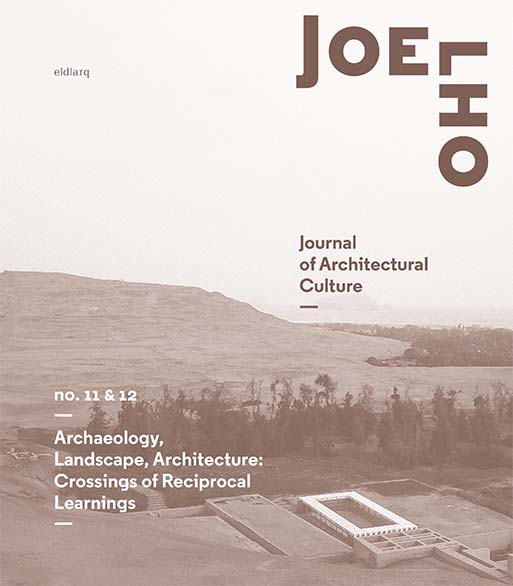Architectural "Constants" from Toni Gironès
Habitability and Poetic Reverberations
DOI:
https://doi.org/10.14195/1647-8681_11_12_13Resumo
The presence of Mankind on Earth is marked by the continuous conquest of space. The ground we walk on has long witnessed our passage or permanence in certain places. Hence it is on that ground that we encounter the traces of those who preceded us and where, at the same time, we build contemporary projects. Caring for the place we inhabit implies acknowledging these time frames. Architecture mediates them in the present, providing them with a renewed condition of habitability. This can be perceived in the work of Catalan architect Toni Gironès, particularly in the context of archaeological remains. Using his lesson of the constants as a starting point, potentially in parallel with Fernando Távora, this paper uses these as mechanisms for triggering sensorial experience, also drawing on Peter Zumthor and Luis Barragán. Then, through the memory(ies) of the ruins of Vilassar de Dalt and Seró, the place is considered here as a means of enabling individual perception and collective, perhaps even global, identity. Finally, some questions are put forward to problematise Toni Gironès’s habitability over the porosity of time, associating past memories, present experience and the unknown future.Downloads
##submission.downloads##
Publicado
Edição
Secção
Licença
Direitos de Autor (c) 2021 Luís Miguel Correia, Carolina Coelho

Este trabalho encontra-se publicado com a Licença Internacional Creative Commons Atribuição 4.0.
Acesso Livre
Autores que publicam nesta revista concordam com os seguintes termos:
a. Autores conservam os direitos de autor e concedem à revista o direito de primeira publicação, com o trabalho simultaneamente licenciado sob a Licença Creative Commons Attribution que permite a partilha do trabalho com reconhecimento da autoria e publicação inicial nesta revista.
b. Autores têm autorização para assumir contratos adicionais separadamente, para distribuição não-exclusiva da versão do trabalho publicada nesta revista (ex.: publicar em repositório institucional ou como capítulo de livro), com reconhecimento de autoria e publicação inicial nesta revista.
c. Autores têm permissão e são estimulados a publicar e distribuir o seu trabalho online (ex.: em repositórios institucionais ou na sua página pessoal) a qualquer ponto antes ou durante o processo editorial, já que isso pode gerar alterações produtivas, bem como aumentar o impacto e a citação do trabalho publicado (Veja O Efeito do Acesso Livre).





